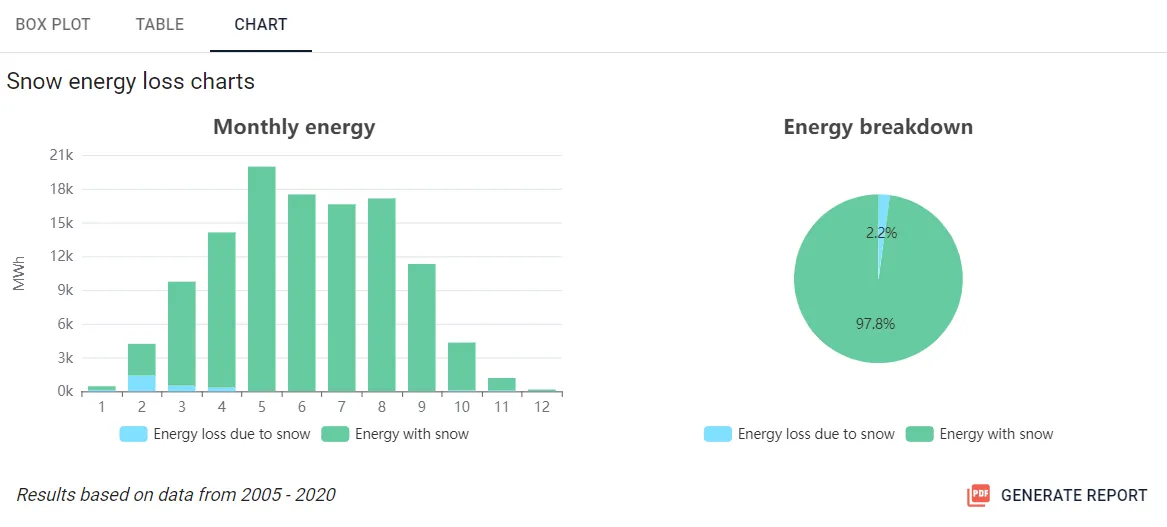
Quantifying snow energy losses for projects in the Nordics
Fortum, a leading renewable energy company from Finland, engaged PVRADAR to accurately assess and mitigate snow-related performance losses for their solar project development portfolio in Finland and Sweden. The goal was to quantify lifetime snow losses, validate internal modeling approaches, and optimize project designs to reduce snow-related risks.


Eero Vartiainen
Senior Solar Technology Manager
A customized web application to quantify project-specific snow losses
The main result of this project was the development of a customized web application that enables project developers to quickly assess project-specific snow losses and produce monthly snow loss factors (P50, P90 and P99) to be used in popular yield estimation software. This tool allows Fortum’s teams to dynamically explore different scenarios, reducing analysis time from days to minutes.
 Screenshot from PVRADAR’s snow-app showing calculated snow loss factors as a monthly boxplot based on 16 years of historic snowfall data
Screenshot from PVRADAR’s snow-app showing calculated snow loss factors as a monthly boxplot based on 16 years of historic snowfall data
The application allows users to compare results from three different snow models — Marion (both pvlib and SAM versions) and Townsend (pvlib) — and interactively adjust model parameters to immediately visualize impacts, including heatmaps and parameter sweeps.


Asim Rashid
Solar Design Specialist
Integrated yield estimation model puts results into perspective
By integrating a yield estimation model, users can translate loss factors into actual energy losses. Since snow predominantly affects months with low irradiation, this puts the snow losses into proper perspective. For example, although the average snow loss factor in the below image was calculated as 7.38%, the average annual energy loss was only 2.2%, as snow typically accumulates when irradiance — and thus energy production — is low.
 Monthly and overall energy breakdowns showing a comparison of snow energy losses and effective yield (after losses, clipping and curtailment).
Monthly and overall energy breakdowns showing a comparison of snow energy losses and effective yield (after losses, clipping and curtailment).
Automatic integration of snow and meteorological data
To enable accurate analysis, PVRADAR automatically integrates meteorological data — including snowfall, snow depth, irradiance, and temperature — from MERRA-2, ERA5, and PVGIS, validated against measurements from the Finnish Meteorological Institute (FMI).


Franco Clandestino
Head of Product
Interested? Contact us.
Learn how PVRADAR’s snow loss assessment helps you reduce uncertainty
improve yield estimates, and make better investment decisions across your portfolio.
